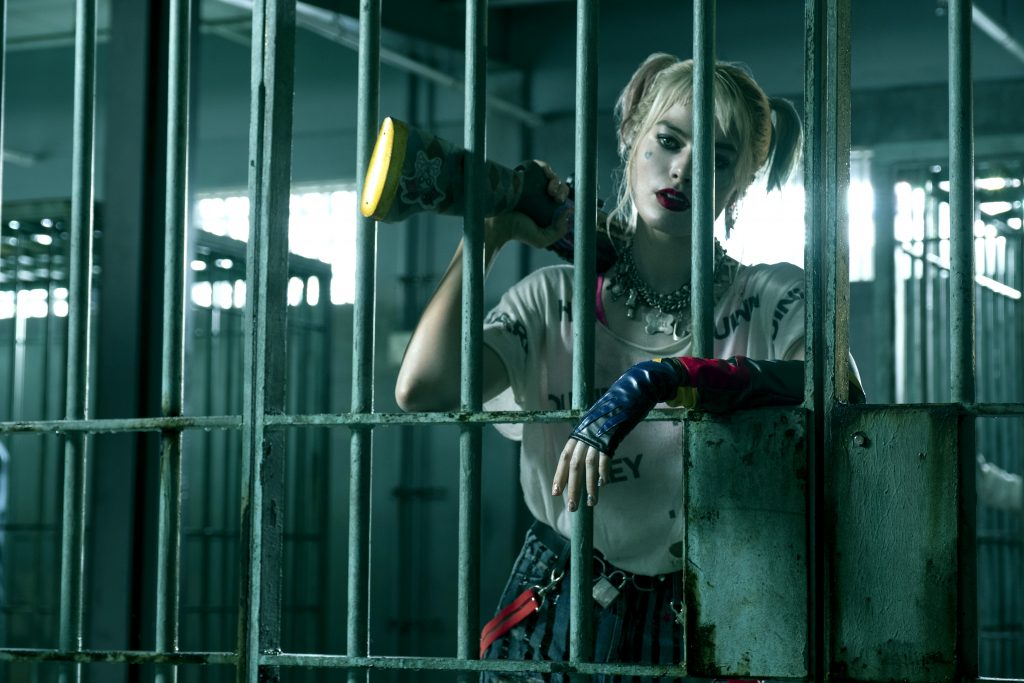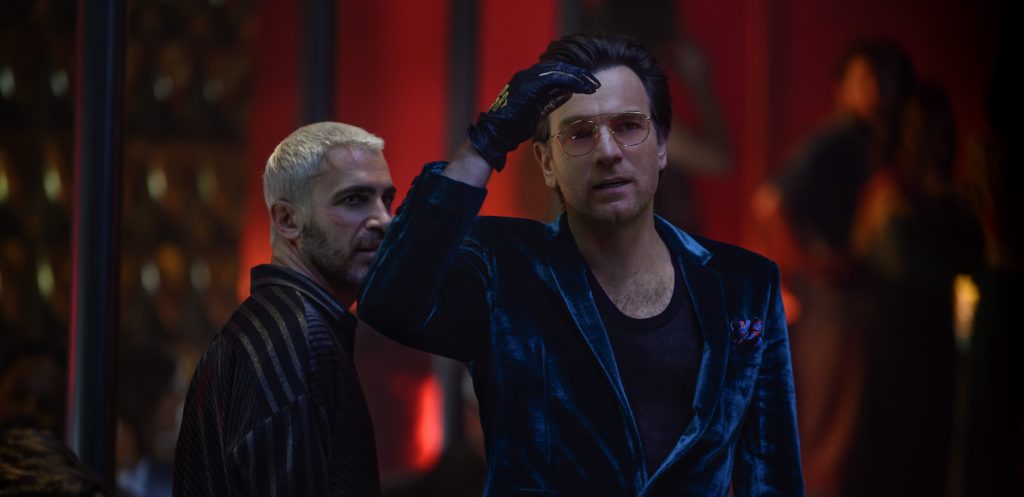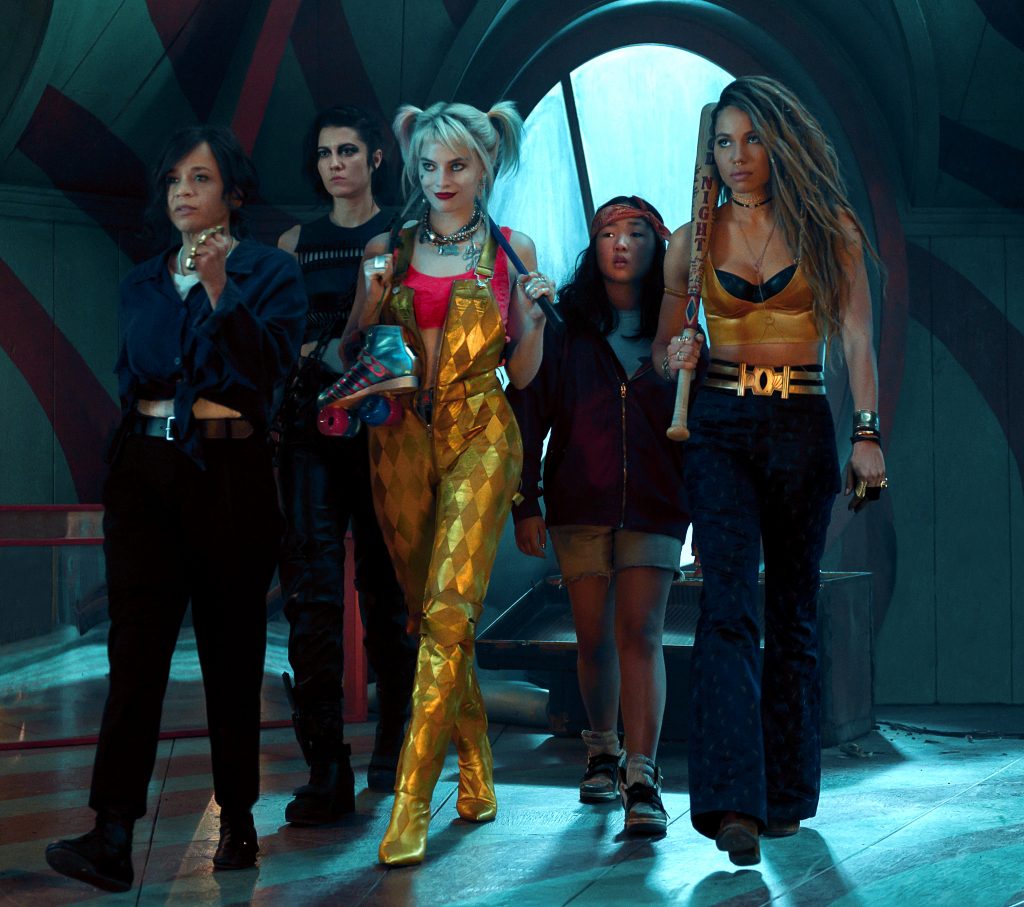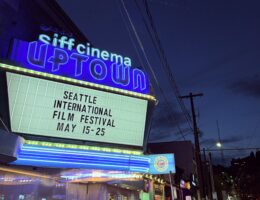Birds of Prey (and the Fantabulous Emancipation of One Harley Quinn) (2020 | USA | 109 minutes | Cathy Yan)
DC’s cinematic universe has gained a reputation for being the gloomier, doomier, self-serious counterpart to rival Marvel’s quippy pop cinematic universe. Their latest offering, Birds of Prey (and the Fantabulous Emancipation of One Harley Quinn), really, very much, desperately in fact, wants you to be constantly aware of what a zany fun time you’re meant to be having. And to be fair, director Cathy Yan and her appealing female ensemble led by Margot Robbie use every sledgehammer in their toolbox to deliver on that intention. I found it more exhausting than exhilarating, but I appreciated the effort.

The film opens with Harley Quinn getting over a break-up and trying to move past an obsession with the Joker (a sentiment familiar to many who’ve been following the long awards season). Happily, for those of us who skipped the disastrously reviewed Suicide Squad, Yan includes a jaunty animated primer on her backstory: a troubled orphan, raised by nuns, who went onto earn a PhD (!), become a psychiatrist (?), who treated the Joker at Arkham Asylum, fell in love with him, lost her mind, and became his sidekick in terrorizing Gotham City. Oh, and something about leaping into a vat of chemicals as a proof of her devotion and/or a skin whitener? Like the rest of the movie, it’s punched up with bold type captions and narrated by Harley, in a singsongy impression of a Brooklyn accent as imagined by a budding comedian from the 1950s Great Plains.

Robbie embodies the character with a joie de vivre physicality, relishing flights and charm offensives alike with a mercurial disposition, fluorescent hair, make-up, and a collection of punk-inspired outfits designed by Erin Benach. The film opens with her flying solo, living in an apartment with a giant hyena, and still benefitting from the protection of everyone’s assumption that she’s still “Mr. J’s” number one girl. This allows her to get away with all sorts of shenanigans, like getting free drinks and breaking legs in Ewan McGregor’s nightclub, without repercussions or having to come home to creepy, preening, gold-toothed Jared Leto every night. It seems perfect, but I suppose, because of the crazy, she feels to make a declaration of independence, consequences be damned (or never considered).
And, thus, her “fantabulous emancipation” begins in the form of crashing a truck into the chemical factory that intertwined her fate with the Joker, complete with technicolor explosions and a action hero walk-away set to Charlotte Lawrence’s “Joke’s On You” (one among many of the film’s girl-power needle drops). Her triumph doesn’t even last long enough to ameliorate her massive hangover with a perfect breakfast sandwich. Before she can even take a bite, the whole town of haters is after her, mostly with good reasons.

As she finds herself on the run, in violent chases, and dodges, the whole movie has to stop several times, rewind, and re-introduce the rest of the many other parts of the ensemble. Ewan McGregor is a preening mob boss and nightclub impresario on the rise, with a fondness of shiny sartorial embellishments, elevated gimp masks, violently removing people’s faces, and a little streak of psychotic misogyny just in case we’re not sure who’s the bad guy here. Jurnee Smollett-Bell is a singer in his underground club who, for reasons, becomes his reluctant driver while still doing her best to help out the people he’s terrorizing.
We also meet, again through flashbacks, Rosie Perez, a hardscrabble detective who’s always being upstaged and under appreciated by her male colleagues. Mary Elizabeth Winstead is a crossbow-wielding assassin righting childhood hood trauma with a long revenge hitlist. Finally, Ella Jay Basco makes a charming big screen debut as a sad streetwise foster kid whose penchant for pickpocketing embroils the film’s chief MacGuffin (a digitally-encoded diamond) deep within her digestive system. It’s obvious that all of these women are eventually going to have to come together to serve their common interests. The amount of time — and action-halting spirals into backstories — that it takes to get them all in the same place and approximately on the same page becomes frustrating.
The quest to acquire this gemstone becomes the film’s primary motivation and an excuse for an inordinate number of chases, alliances, betrayals, negotiations, and increasingly contrived plot developments. All are staged with an eagerness to force the audience into having a good time whether they like it or not. There’s a jailbreak that begins with a gun that shoots beanbags, confetti, and color run dust (the movie is weirdly violent in its non-lethality), includes a rain drenched battle royale, and concludes with a baseball-bat fight to a minivan getaway. It’s aggressively fun even though the elements don’t entirely track. Similarly, at one point Harley puts on some skates just because doesn’t a motorcycle-assisted roller derby chase sequence seem like the quirkiest possible setpiece. And of course, because fun, the film’s big showdown takes places in an abandoned amusement park and is set to Heart’s “Barracuda”.
It’s admittedly great to finally see another comic book movie that’s directed by a woman, centers a female perspective (even if it’s “crazy lady”), and showcases a diverse cast of women. They all bring game enthusiasm to a collection of roles that feel more like catalog of characters than a collection actual human beings, which is perhaps the defining aesthetic of DC’s live-action offerings. It’s undeniable that several the bombastic sequences set to clever soundtracks, are in fact, pretty fun to watch. But as the film marches along, it really is a lot. I’d have preferred to leave the theater invested in these franchise-launching characters, rather than having been pummeled by too much, but maybe that’s just me.
☆☆½



